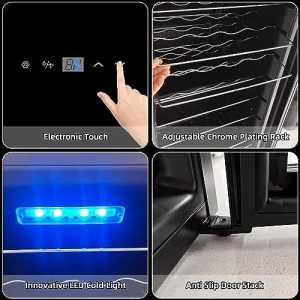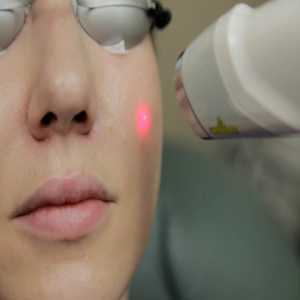
MICRA Pacemakers: Revolutionizing Heart Rhythm Management

In the ever-evolving field of cardiology, the advent of the MICRA pacemaker represents a significant leap forward. Traditional pacemakers have been a cornerstone in managing heart rhythm disorders, but MICRA pacemakers are redefining the landscape with their innovative design and benefits. This guide delves into what MICRA pacemakers are, how they work, their advantages, and what makes them a game-changer in heart rhythm management.
What is a MICRA Pacemaker?
The MICRA pacemaker is a revolutionary device used to treat patients with bradycardia a slow heart rate. Unlike conventional pacemakers, which require leads to connect the device to the heart, the MICRA pacemaker is leadless. This tiny device is implanted directly into the heart, offering a less invasive alternative to traditional pacemaker systems.
How Does the MICRA Pacemaker Work?
The MICRA pacemaker functions similarly to traditional pacemakers in that it helps regulate the heart’s rhythm. Here’s a simplified explanation of how it works:
- Implantation: The MICRA pacemaker is implanted via a catheter inserted into a vein in the groin and navigated to the heart. The device is then deployed directly into the right ventricle, the heart’s main pumping chamber.
- Monitoring and Stimulation: The MICRA pacemaker monitors the heart’s electrical activity once in place. If it detects a slow heart rate or other irregularities, it sends electrical impulses to stimulate the heart and maintain a normal rhythm.
- Battery Life: The MICRA pacemaker is equipped with a long-lasting battery that typically lasts around ten years, at which point the device may need to be replaced.
Advantages of MICRA Pacemakers
- Leadless Design: One of the most significant advantages of the MICRA pacemaker is its leadless design. Traditional pacemakers require leads (wires) to connect the device to the heart, which can sometimes cause complications. The MICRA pacemaker eliminates this need, reducing the risk of lead-related issues.
- Minimally Invasive Procedure: Implantation of the MICRA pacemaker is less invasive than traditional pacemaker surgery. The procedure is performed through a small catheter inserted into a vein in the groin, avoiding the need for a large chest incision.
- Reduced Risk of Complications: Because it doesn’t require leads or a pocket under the skin, the MICRA pacemaker carries a lower risk of complications such as infections or lead dislodgement.
- Improved Comfort: Patients with MICRA pacemakers generally experience less discomfort and fewer restrictions post-implantation. The device is small and discreet, leading to improved quality of life.
- Long Battery Life: With a battery life of approximately ten years, the MICRA pacemaker reduces the frequency of replacement procedures compared to traditional pacemakers, which can be a major advantage for patients.
Who is a Candidate for MICRA Pacemakers?
MICRA pacemakers are typically recommended for patients with bradycardia and are suitable candidates for leadless pacemakers. This includes:
- Patients with Persistent Bradycardia: Those experiencing a consistently slow heart rate that requires intervention.
- Patients Needing Single-Chamber Pacing: The MICRA pacemaker is designed for single-chamber pacing, making it suitable for certain heart conditions.
However, not all patients may be suitable candidates for the MICRA pacemaker. The healthcare team will consider factors such as the size and shape of the heart and the specific type of heart rhythm disorder.
What to Expect During and After the Procedure
During the Procedure:
- Preparation: The patient is given a mild sedative or local anesthesia to ensure comfort during the procedure.
- Implantation: A catheter is inserted into a vein in the groin and guided to the heart, where the MICRA pacemaker is deployed.
- Monitoring: The pacemaker is tested to ensure proper positioning and functioning before removing the catheter.
After the Procedure:
- Recovery: The recovery period is typically short, with most patients able to return home the same day or the next.
- Post-Implantation Care: Patients will need regular follow-up appointments to monitor the pacemaker’s performance and ensure everything functions correctly.
- Lifestyle Adjustments: Most patients can resume normal activities shortly after the procedure. However, following the healthcare provider’s advice on any activity restrictions or follow-up care is important.
Conclusion
The MICRA pacemaker represents a significant advancement in heart rhythm management. Its leadless, minimally invasive design offers numerous benefits over traditional pacemakers, including reduced risk of complications, improved patient comfort, and long-lasting battery life. Dr. Kalkekar's CURA Advanced Cardiac & Child Health Clinic provides specialized heart treatment in Seawoods, supporting patients in accessing the latest cardiac care innovations for improved heart health and quality of life.
If you or a loved one are considering a MICRA pacemaker, it’s essential to consult with a cardiologist who specializes in this technology. They can provide personalized advice and ensure that this innovative solution is the right fit for managing your heart rhythm condition.
As technology advances, devices like the MICRA pacemaker are paving the way for more effective and less invasive treatments, helping improve the quality of life for patients with heart rhythm disorders.
Author Bio
Article Comments
No Comments!
At present there are zero comments on this article.
Why not be the first to make a comment?
Similar Articles
Search Pages
User Upgrade
account to full use of editor,
Including hyperlinks
Article Categories
There are zero sub-categories in this parent category.
There are zero sub-categories in this parent category.

















